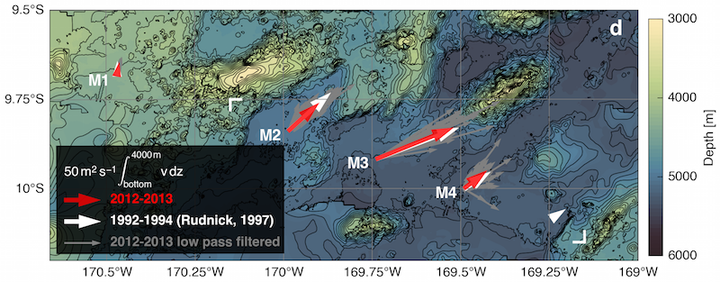
Abstract
The abyssal flow of water through the Samoan Passage accounts for the majority of the bottom water renewal in the North Pacific, thereby making it an important element of the Meridional Overturning Circulation. Here we report recent measurements of the flow of dense waters of Antarctic and North Atlantic origin through the Samoan Passage. A fifteen month long moored time series of velocity and temperature of the abyssal flow was recorded between 2012 and 2013. This allows for an update of the only prior volume transport time series from the Samoan Passage from WOCE moored measurements between 1992 to 1994. While highly variable on multiple time scales, the overall pattern of the abyssal flow through the Samoan Passage was remarkably steady. The time-mean northward volume transport of about 5.4 Sv in 2012/2013 was reduced compared to 6.0 Sv measured between 1992 and 1994. This volume transport reduction is significant within 68% confidence limits ($\pm$0.4 Sv) but not at 95% confidence limits ($\pm$0.6 Sv). In agreement with recent studies of the abyssal Pacific, the bottom flow through the Samoan Passage warmed significantly on average by $1\times10^{-3}$°C per year over the past two decades as observed both in moored and shipboard hydrographic observations. While the warming reflects the recently observed increasing role of the deep oceans for heat uptake, decreasing flow through Samoan Passage may indicate a future weakening of this trend for the abyssal North Pacific.